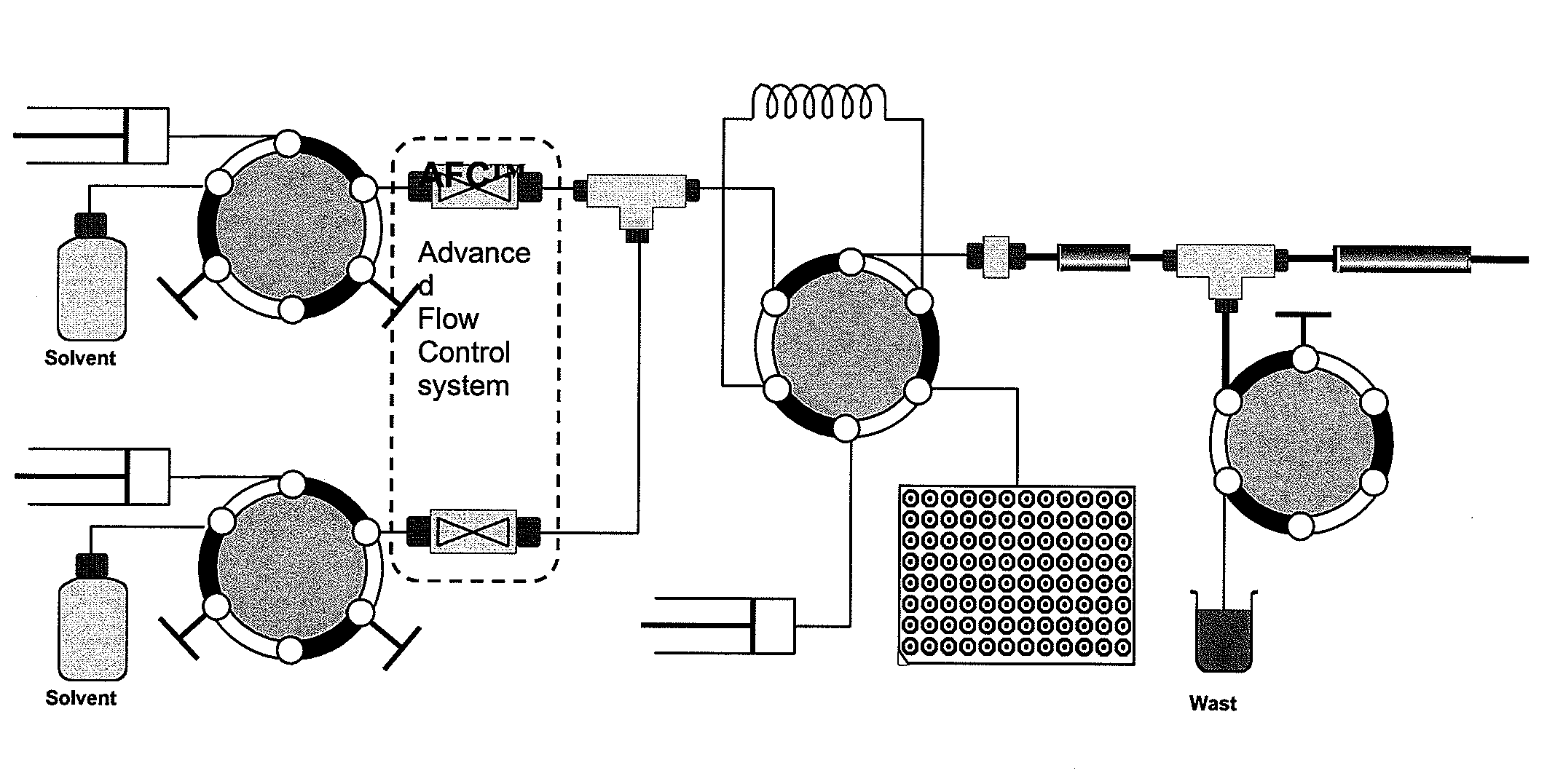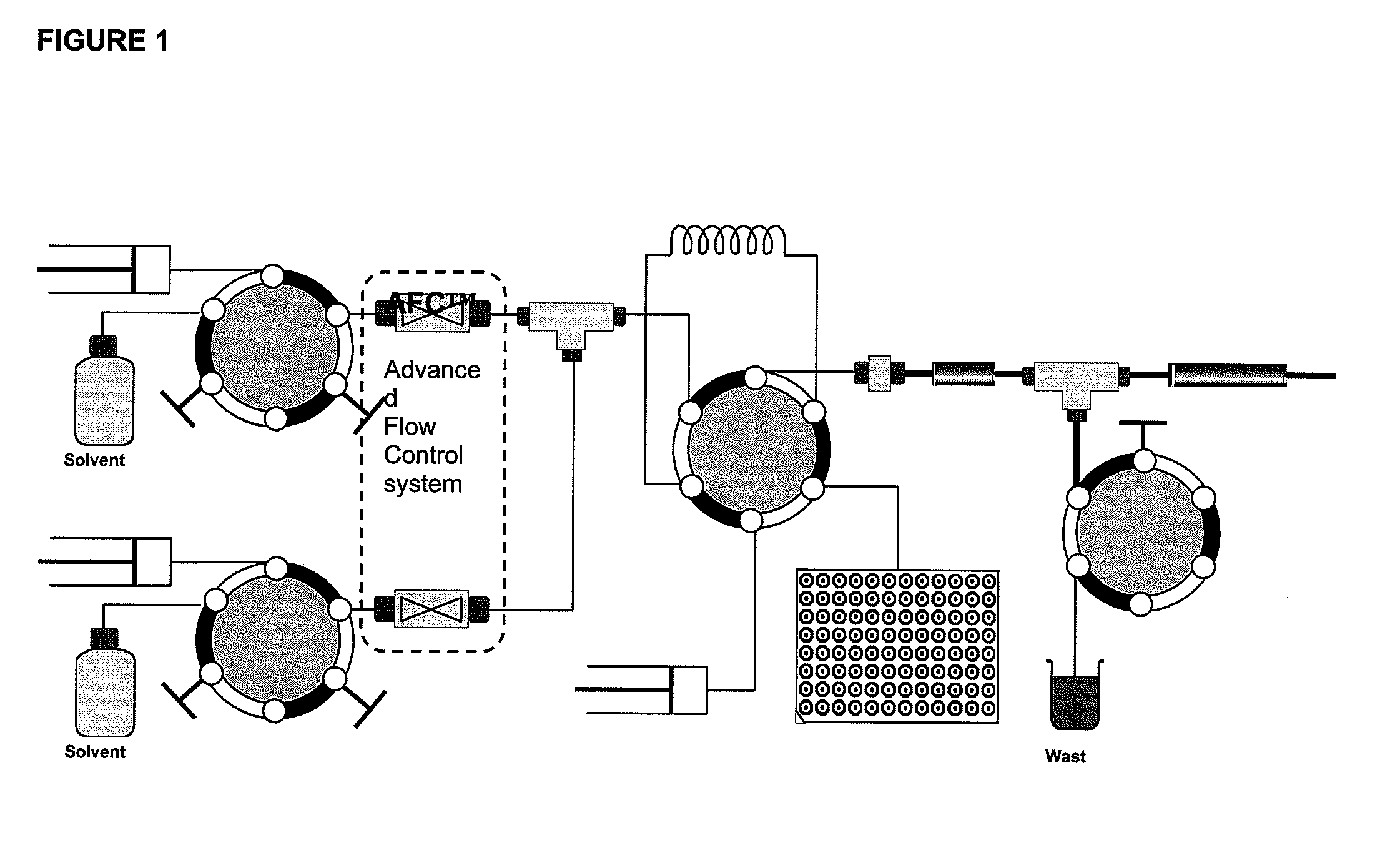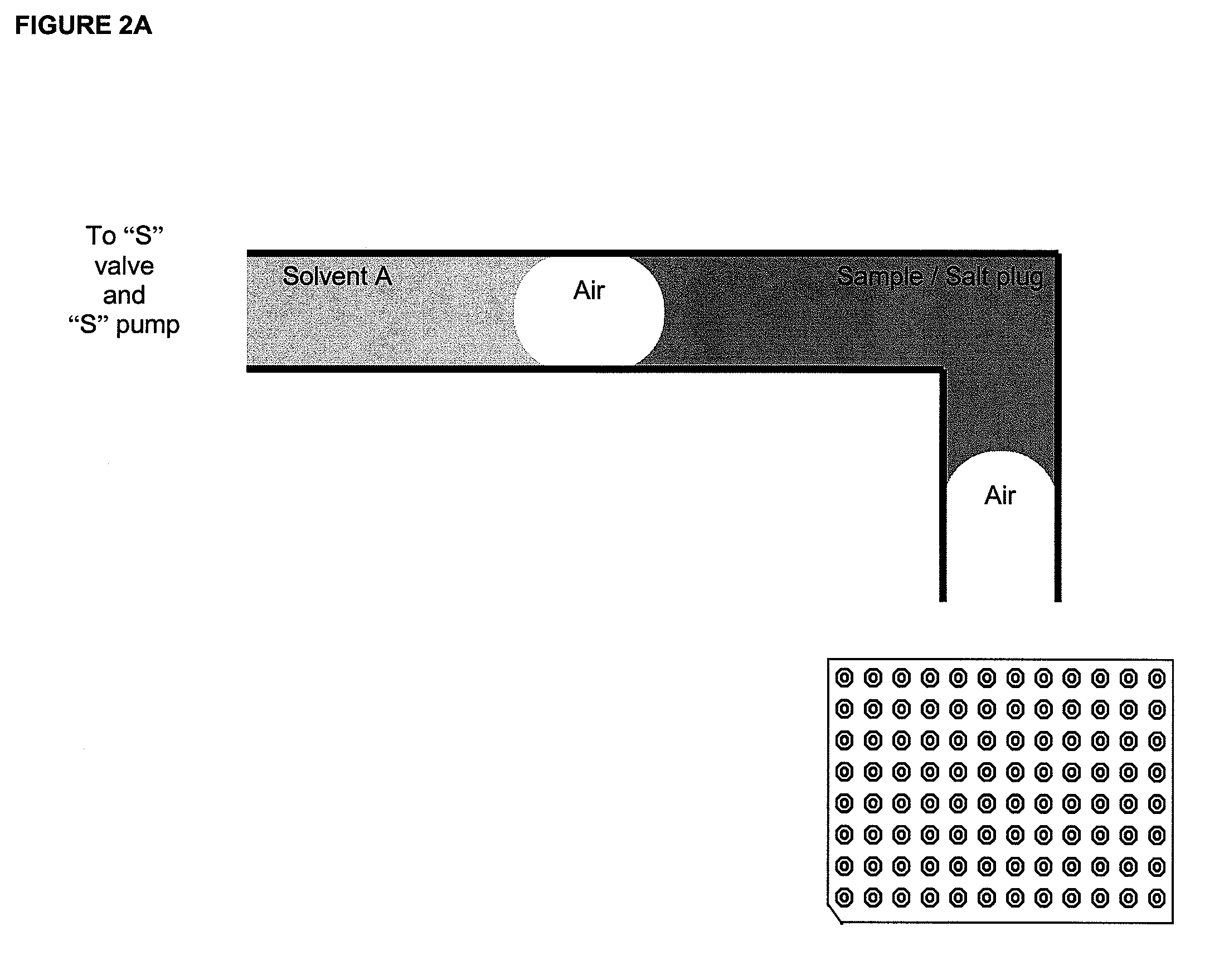[0015]The present invention uses very small volumes of liquid in order to move fractions of analytes from one
chromatographic column segment to one or more subsequent
chromatographic column segments. This volume is one or several orders of magnitude smaller than the volume that would have to be loaded into and delivered from the actual pumps of
quaternary and ternary LC pump systems to achieve the corresponding delivery of
solvent in a split-flow LC
system. This means that the present invention makes it practically feasible to use labile, corrosive, or toxic eluents and financially feasible to use very expensive eluents such as e.g.
a peptide solution. The wider choice of possible eluents also increases the number of
usable stationary phases. E.g. the present invention enables the use of stationary phases with one or more immuno-affinity reagents and
elution of analytes from said phase by the pertinent
hapten(s) dissolved in one or more plugs of liquid that are sequentially drawn from the
autosampler. As an example, the
stationary phase can contain e.g. TiO2 (
titanium dioxide) that binds phophopeptides and the releasing buffer may contain DHB at relatively
high concentration. In both of these examples, a C18-based reverse phase column could provide the
chromatographic separation in the second dimension.
[0016]The
chromatographic separation can be further expanded from being two-dimensional to being multi-dimensional by connecting multiple columns in separate housings or stacking multiple stationary phases in the same housing. With previous practice, each new dimension would require the addition of one or two more pumps and the
programming and synchronization of these, and hence on-line multi-dimensional separations have hitherto been nearly unattainable for practical and financial reasons. However, the present invention enables the extension from two-dimensional separation to multi-dimensional separation without increasing the technical complexity or cost of hardware. Each dimension will require its carefully selected eluent, but the only requirement for adding an extra dimension of separation is that the eluent that is active in one dimension does not adversely affect the separation in other dimensions. Normal autosampler systems can easily store a large number of discrete vials, hence this does not
pose any practical limit to the number of eluents (and hence dimensions) the overall separation may comprise. As described herein, a single pump can deliver virtually any volume of any liquid from the autosampler and through a column segment of the relevant
stationary phase to cause the wanted chromatographic effect, also when a high number of different stationary phases are used. This can be done reproducibly and with precise flow characteristics (flow rate, volume, pressure etc) as long as the pumped flow is delivered by a split-free pumping system and each eluent plug is flanked by air pockets and thereby kept from mixing with the mobile phase that is delivered by the LC pumps. Thus, for example, it becomes straightforward to precede a standard SCX / RP 2-dimensional setup with e.g. poly-affinity columns that selectively bind certain classes of compounds that may be released sequentially by sequential
elution with plugs of
solvent containing a single competing
hapten or released simultaneously by eluting with a single plug of
solvent containing a mixture of haptens.
[0019]In one aspect, the reverse phase column (RPC) is connected to an analytical device on its distal end such that an eluate can be delivered into the analytical device. The analytical device can comprise a
mass spectrometer. The mass
spectrometer can further comprise a nano-
electrospray apparatus. In one aspect, the mass spectrometer comprises a tandem mass spectrometer or an
ion trap mass spectrometer or a combination thereof. In one aspect, the
ion exchange column (e.g., a cation (CX) or
anion exchange column) and the reverse phase column (RPC) are enclosed in one housing. In one aspect, the two dimensions, or columns, are in different housings, or, the columns are arranged such that they can be easily, and individually, replaced.
[0026]In one aspect, the liquid
chromatography system of the present invention further comprises a computer system operatively linked to the chromatography system, thereby making the chromatography system an automated operation. This computer system enables controlled split-free operation of the liquid chromatography system and ensures that air plugs are introduced between the mobile phase and the salt solutions used to elute analytes from the
ion exchange column.
[0032]Entering analysis instructions and parameters for 2-dimensional chromatography can be a complicated and tedious process on systems that employ four intermittently active chromatographic pumps for providing the two consecutive gradients (i.e. a piece of salt buffer gradient followed by a full organic
phase gradient in repeated steps). The present invention permits a simplification of the man-
machine interface to be made, namely by using a
software interface that expands the systems normal 1-dimensional method
instruction set by only two parameters in order to become a fully working 2-dimensional
separation method. These two parameters would in that case be a simple “check box” to turn on the 2-dimensional mode, and the number of salt plugs to be injected (from pre-defined positions on the sample plate then). In other words, the present invention provides a means for performing 2-dimensional separation not only with simpler
instrumentation than commonly used for the purpose but also much simpler method definitions. These two simplifications in combination turn 2-dimensional separation into a process as easy and robust as the process used for 1-dimensional separation.
 Login to View More
Login to View More 


